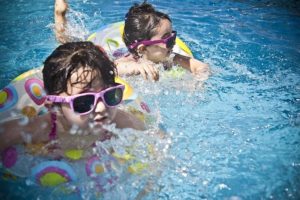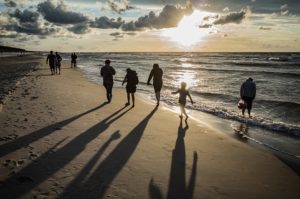As the temperature rises and COVID restrictions ease, there is often nothing better than taking a dip and cooling off. As inviting as pools and beaches may be, there are also many dangers. According to the National Safety Council, there are approximately 10 drownings in the United States every day.

Whether the swim facility is private, public, or residential, it is imperative that every visitor ask themselves the following questions to increase the likelihood of having a safe and enjoyable visit.
Pool safety checklist
- Is the swim area is supervised by lifeguards?
- Is the water clean, safe, and free from debris?
- Is the swim facility clean and well-maintained?
- Are there power lines or electrical equipment in the swim area?
- Is the water depth clearly marked within the swim area?
- Are lifelines used to separate the shallow and deep swim areas?
After you have answered these questions, it’s important to evaluate the members of your swim party. For children with marginal swimming experience, a personal flotation device (PFD) is suggested when there is potential for the pool or beach water to exceed the height of the child. Though children are the most susceptible to preventable drownings, you should also be aware of the swimming experience of adults in your party.

Boating safety tips
If your summer excursion involves boating, there must be one United States Coast Guard (USCG)-approved life jacket for each person on the boat. The life jacket must be the appropriate size for each intended wearer, and if the vessel is longer than 16 feet, it must also have a throwable floatation device.
Simply having the proper number of PFDs is not enough to maintain a safe environment on the water. A personal flotation device that doesn’t fit provides a false sense of security to both a child and the supervising adult. The United States Coast Guard uses the term “comfortably snug” when describing the proper way a PFD should fit. Comfortably snug can best be described as “fitting securely without being so tight that the PFD cannot be snapped into place.” It is essential that the adult supervisors continue to monitor the fit of the PFD throughout the beach, boating, or pool excursion.
Water safety for young children and novice swimmers is built upon consistent and unwavering supervision. Drowning victims often do not make sounds. Unfortunately, people can disappear into the waves or a crowded pool and lose consciousness in a matter of minutes. Supervision starts as soon as adults enter any property with a pool, beach, or moving body of water – not just when in the water.
Swimming pool fencing
According to the Centers for Disease Control and Prevention, each swimming pool should have a four-sided isolation fence, with self-closing and self-latching gates. These fences help keep children and toddlers from the swim area when they are not supposed to be in the water. Fences should separate the pool area from every other section of the property.

Beach safety
Beaches have no such boundaries, and therefore require a different type of supervision to ensure a safe swim day. For beaches, it is never a good idea to swim alone. Encourage your older children who are experienced swimmers to partner with a friend. For your younger children, an adult should serve as their swim buddy. The buddy system assists adults in making sure children are not gradually pulled out into deeper waters due to longshore and rip currents.
Life-saving knowledge: CPR
Unfortunately, even when all precautions are taken, accidents happen. In the event that an accidental drowning occurs, knowing life-saving techniques are the last line of defense. Having knowledge of cardiopulmonary resuscitation (CPR) can save the life of a drowning victim, but to employ CPR one must be able to get to the victim. At least one adult in each swim party should have the basic ability to float, swim and move through the water to reach an individual that may then need CPR.
Supervision, inspection, and preparation are not always our first thoughts when planning beach trips, boating outings, and pool parties. However, by taking the above steps and exhibiting a small amount of diligence, you can help prevent an accidental drowning and enjoy great days on the water.




